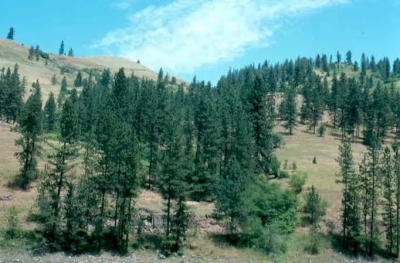
The most significant adaptations of mountain plants are seen at higher elevations as these are the areas with extreme conditions. At these elevations trees begin to thin out as they cannot survive. Above the tree line, a few plants have developed some unique features to survive the extreme cold, strong sun and heavy winds.
Plants like sparse grasses and alpine perennials grow very close to the ground to avoid being uprooted by strong winds. Lichens and mosses cling to rocks and grow well in damp conditions. Most mountain plants have strong, clinging roots and short stems that can withstand strong winds. Their leaves are small, waxy or spiny to retain moisture and are not easily harmed by snow or wind. Their flowers are surrounded by leaves for protection and the grasses are often bunched together like a bush and sway in a rotating motion to withstand storms.
Some plants have stems which extend deep under the soil and allow storage of food through the harsh winter. These plants can immediately start growing in warmer weather, without waiting for the icy ground to thaw, deriving nutrients from their stems. Similarly the leaves of coniferous trees are thin, spiky and waxy to retain moisture even when the ground is frozen.
Picture Credit : Google




